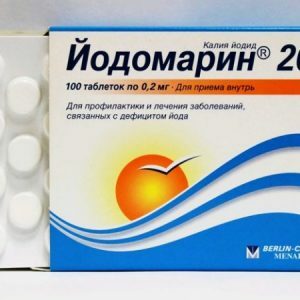Enterosorbents: an overview of popular drugs
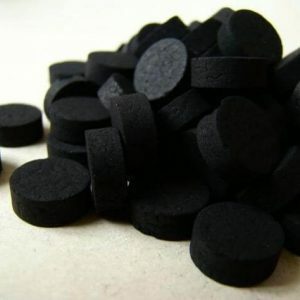
Enterosorbents are a number of drugs that have the ability to bind and retain various toxins, allergens and toxic substances.In addition, such drugs can absorb various pathogenic microflora and the products of vital activity released by it, and after that they are excreted by natural ways outwards.
In principle, any disease is accompanied by intoxication of the body, and it does not matter what pathology develops in the body - intestinal infections, allergies, flu or high body temperature. Therefore, enterosorbents and are widely distributed - removing toxins / allergens / poisons from the body, they provide not only an early recovery, but also the strengthening of immunity.
A positive point in the application of the medicines under consideration is that they have a minimal "set" of side effects and contraindications, and they start to act in the shortest possible time.For example, in case of an allergic reaction, doctors prescribe an enterosorbent for reception during the first hours after the onset of symptoms, food can be consumed only 2-3 hours after taking an enterosorbent, and it is absolutely not recommended to combine the intake of the drugs and other oral medications -The therapeutic effect of the latter will not be.
Table of contents: Types of enterosorbents When enterosorbents are used List of popular enterosorbentsTypes of enterosorbents
More recently, the most popular enterosorbent was activated charcoal, and to date the pharmacological industry is simply amazed by the abundance of preparations of such action. All enterosorbents are divided into several main groups:
- Organic.They are made only on the basis of natural digestive fibers - for example, seaweed, chitin, lignin, pectin or cellulose are used.The most famous representative of organic enterosorbents is Multisorb.
- Carbon.Here everything is simple: similar drugs are derived from activated carbon.
- Silicon.These enterosorbents are made on the basis of silicon-containing components, and the most popular representatives of this type of medications under consideration are Smecta, Polysorb, Enterosgel.
If we consider the types of enterosorbents by popularity, then people select silicon and carbon preparations - they are distinguished by low cost and high efficiency.Absolutely all representatives of these groups absorb toxins and allergens, have a wide range of action and neutral taste, are completely eliminated from the body and absolutely non-toxic.
When enterosorbents
are used The purpose of the drugs under consideration is the prerogative of physicians, since it will be necessary to take into account the sorption characteristics of the agent and the general condition of the patient. If to speak as a whole, enterosorbents are used within the framework of complex therapy for many pathologies:
- helminthiasis;
- drug / alcohol dependence;
- kidney failure;
- peritonitis;
- diseases of the liver and biliary tract;
- sepsis and wound infectious processes;
- dermatitis, eczema and other skin diseases;
- allergic reactions;
- poisoning of a different kind.
Note: the appointment of a specific enterosorbent, the calculation of dosage and duration of administration should be done by a physician.
List of popular enterosorbents
Polysorb
This preparation belongs to the group of silicon and is produced in powder form, and for preparation preparation to reception it is necessary only to dissolve powder raw materials in pure water.The dosage of Polysorba is calculated only taking into account the patient's weight data - for each kilogram of the patient's mass there should be 0, 2 grams of powder, and the daily norm should not exceed 4 such doses.
 Contraindications to the use of Polysorb are:
Contraindications to the use of Polysorb are:
- stomach ulcer;
- Intestinal bleeding;
- lack of muscle tone;
- Intestinal obstruction.
Activated carbon
It is this enterosorbent that is considered the most famous, popular and affordable.Take activated charcoal 2-3 tablets 4 times a day, but if the reason for the appointment of this drug is acute intoxication, then the dosage should be calculated in the proportion of 1 tablet per 10 kg of the patient's weight.
Activated charcoal can cause some side effects:
-
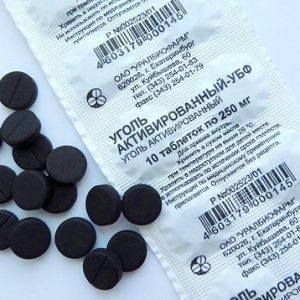 dyspepsia;
dyspepsia; - lowering body temperature;
- disorders of stool( may be diarrhea or constipation);
- hypovitaminosis;
- irritation of the intestinal walls;
- problems with the absorption of trace elements.
Similar side effects may appear only with prolonged use of activated charcoal. Patients should be warned that the intake of this enterosorbent is accompanied by a change in the color of the feces - they become black. Contraindication to the use of this enterosorbent is peptic ulcer in any part of the gastrointestinal tract.
Enterosgel
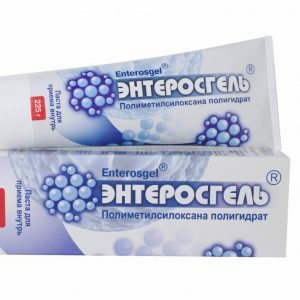 This drug is available in a gel form, is able to quickly bind food allergens, drugs, alcohol, poisons and any toxic substances.If Enterosgel is prescribed for admission on the background of allergic reactions, the duration of the course will be 14-21 days.
This drug is available in a gel form, is able to quickly bind food allergens, drugs, alcohol, poisons and any toxic substances.If Enterosgel is prescribed for admission on the background of allergic reactions, the duration of the course will be 14-21 days.
Contraindications to Enterosgel are only two pathologies - intestinal obstruction and atonic processes in the gastrointestinal tract( decrease in the tone of the stomach, intestines, and so on).
This enterosorbent has a distinctive characteristic - it is not metabolized and not absorbed, but only collects onto its surface toxins and pathogenic microorganisms, medicinal components and other substances that cause poisoning.
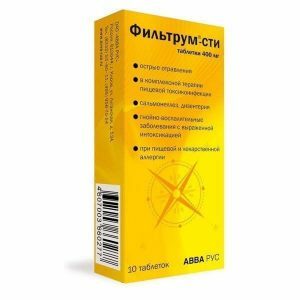 Contraindicated take Filtrum-sti with:
Contraindicated take Filtrum-sti with:
- peptic ulcer of the stomach and duodenum;
- lignin intolerance( based on its preparation);
- intestinal atony.
This drug, with prolonged use, can provoke the development of stable constipation, the withdrawal of calcium and vitamins from the body, the occurrence of allergic reactions on the skin.
Polyphepan
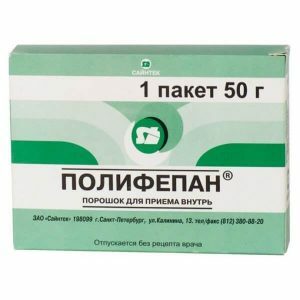 This preparation belongs to the group of universal enterosorbents, it is available in tablet or powder form, and its basis is hydrolytic lignin.After entering the gastrointestinal tract, Polyphepan binds to various toxins and removes them from the body.
This preparation belongs to the group of universal enterosorbents, it is available in tablet or powder form, and its basis is hydrolytic lignin.After entering the gastrointestinal tract, Polyphepan binds to various toxins and removes them from the body.
Effective this drug will be with food poisoning, and with medicines, with allergies and ingestion of any poisons / toxins into the body.
Smecta
On our site there is a detailed article on how and when to take this enterosorbent to patients of different ages, here we will only repeat several theses:
-
 Indications for use Smectas can be heartburn, diarrhea of any origin, flatulenceAnd dyspepsia.
Indications for use Smectas can be heartburn, diarrhea of any origin, flatulenceAnd dyspepsia. - Contraindications to the use of this drug are intestinal obstruction, fructose intolerance, deficiency of sucrose and hypersensitivity to certain components of Smecta.
- This drug is approved for infants, but it is necessary to get a dosage calculation from a pediatrician.
Lactofiltrum
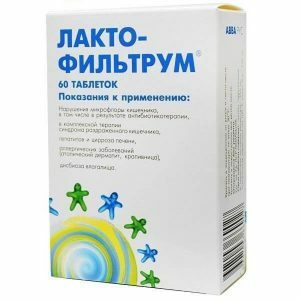 This drug is made on the basis of lignin and lactulose, is prescribed for patients with irritable bowel syndrome, hepatitis and cirrhosis, allergic processes( urticaria, atopic dermatitis and others), intestinal microflora disorders.
This drug is made on the basis of lignin and lactulose, is prescribed for patients with irritable bowel syndrome, hepatitis and cirrhosis, allergic processes( urticaria, atopic dermatitis and others), intestinal microflora disorders.
Lactofiltrum is never prescribed for gastric bleeding, intestinal obstruction and galactosemia.
Enterodes
 It is produced in the form of a powder, it is most often prescribed when:
It is produced in the form of a powder, it is most often prescribed when:
- poisoning is acute;
- infectious processes in the intestine;
- allergic reactions;
- dysentery;
- to salmonellosis.
A variety of enterosorbents on pharmacy shelves is both good and bad.The positive thing is that the doctor can choose a patient individually for the patient, if necessary, correct the prescriptions and even make a replacement for the enterosorbent.But the negative point is that patients do not always seek for qualified medical help and start treating poisoning, diarrhea and allergies independently, choosing the medications under consideration on the principle of "neighbor suggested."In fact, enterosorbents should be prescribed only by a specialist, because the uncontrolled use of these medicines can lead to the occurrence of side effects and even an overdose.
Tsygankova Yana Aleksandrovna, medical reviewer, therapist of the highest qualification category

